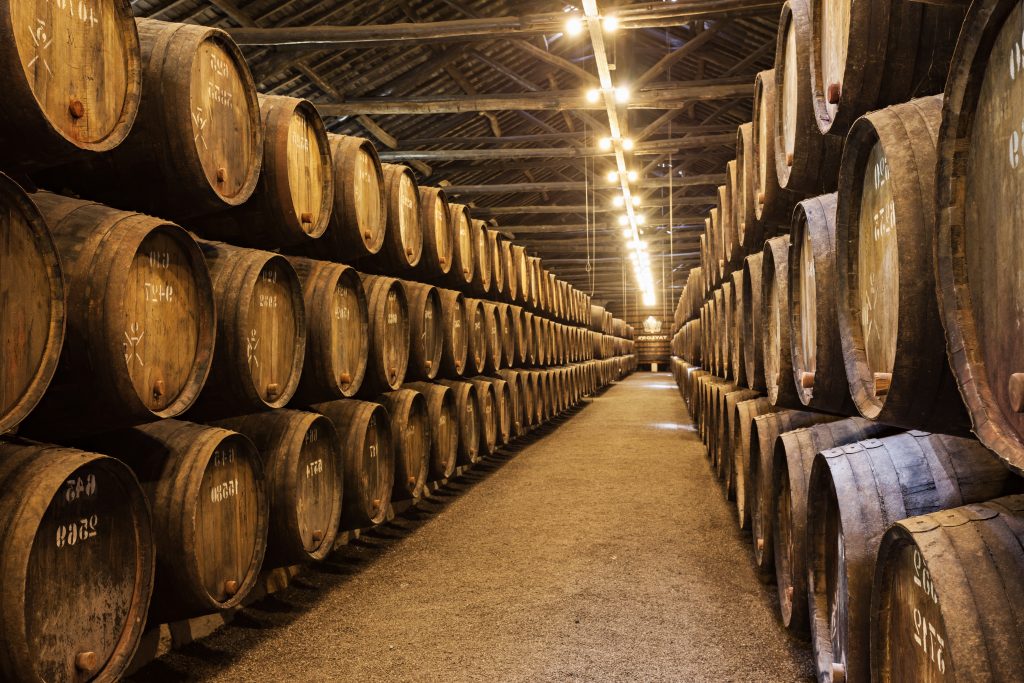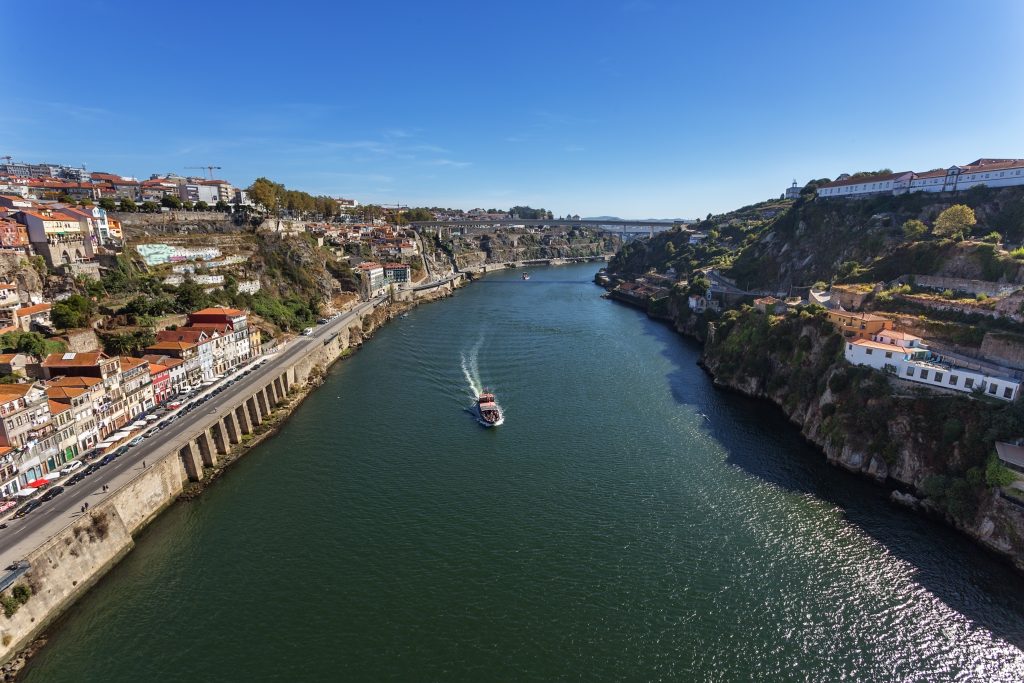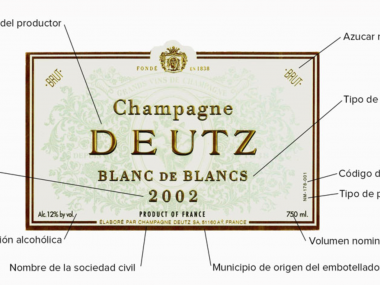Porto wines are fortified or generous wines produced in the north of Portugal, in the Douro Valley, which was the first wine region to be demarcated in the world in 1756. Here we tell you everything you need to know about one of the most emblematic sweet red wines in Europe.

Porto wines characteristics
The fact that it is a fortified wine means that during its production process, alcohol is added to it to abruptly end the fermentation process, resulting in wines with an alcohol content that can vary between 17 and 25 degrees. This adds a greater sweetness -which varies according to the amount of alcohol- as well as longevity. In fact, they are among the longest-lived wines in the world.
This longevity is what allowed this wine to become popular in the first place. The English, who have always been more inclined towards French wine, had to look for an alternative when importing from this country was banned in 1678. In 1703, they signed a trade agreement with Portugal.
However, the Portuguese wines of the time had neither the structure to withstand the journey nor a taste that suited the English palate. For this reason it is said that port wines, characterised by both their sweetness and their longevity, were created to please the English public.

Porto Vineyard
The Porto vineyard is spread over an immense area of 250,000 hectares, but only 45,000 are dedicated to the cultivation of vines of the following varieties: Touriga Nacional, Touriga Francesa, Tinta Barroca, Tinta Câo, Tinta Roriz, Periquita, Rufeto, Sousao, etc.; and white Arinto, Bual, Sercial, Codega, Malvasia Colorada and Moscatel Galego.
The Douro Valley region, where Port is produced, is divided into three sub-regions: Lower Corgo, Upper Corgo and Upper Douro. The demarcation of port wines is situated in the north and north-east of Portugal, bathed by the tributaries of the Douro: Corgo, Torto and Pinhâo. The area is protected from the Atlantic winds by the Marse and Monte-Muro mountain ranges.
The best area for the production of these is Alto Corgo, specifically Pinhão. The terrain is rough and with steep slopes so that the cultivation of the vine is practiced on terraces following the contour lines. The soil is dominated by schist and crumbling slate. Temperatures are high as is common in a continental climate with an Atlantic influence.

How is Porto wine made?
Porto wine is made by fortifying the wine in full fermentation with pure wine alcohol, so that the fermentation is stopped while preserving some of the residual sugar. In this way, a port wine with an approximate alcohol content of 20º is obtained. Since the fermentation is short, the anthocyanins and tannins that will give body and colour to the wine must be extracted by treading the grapes and mixing the skins with the must homogeneously.
During the spring the wine is transported to the city of Vilanova de Gaia where the climate is milder and therefore ideal for the maturation of the port in 600-litre pipes. The wine will remain in the barrel for between two and fifty years, the best quality being those with a less oxidative profile and less taste of wood.
Different types of Porto
The exceptional vintage ports bottled unfiltered after two years of maturation are called Vintage. If the ageing process in wood is prolonged (between 10 and 40 years) and the wood is refreshed with younger ports, the Tawny category is obtained. Tawny has a softer taste and colour than Vintage.
The ports labelled as Colheitas are single vintage wines but are aged for a minimum of seven years in wood. The Late Bottled Vintage (LBV) ports are Vintage but late bottled, as they are aged in barrels for between four and six years.






